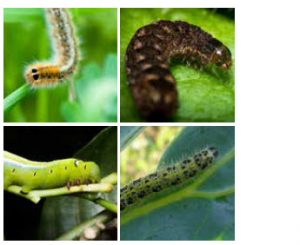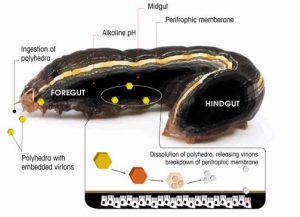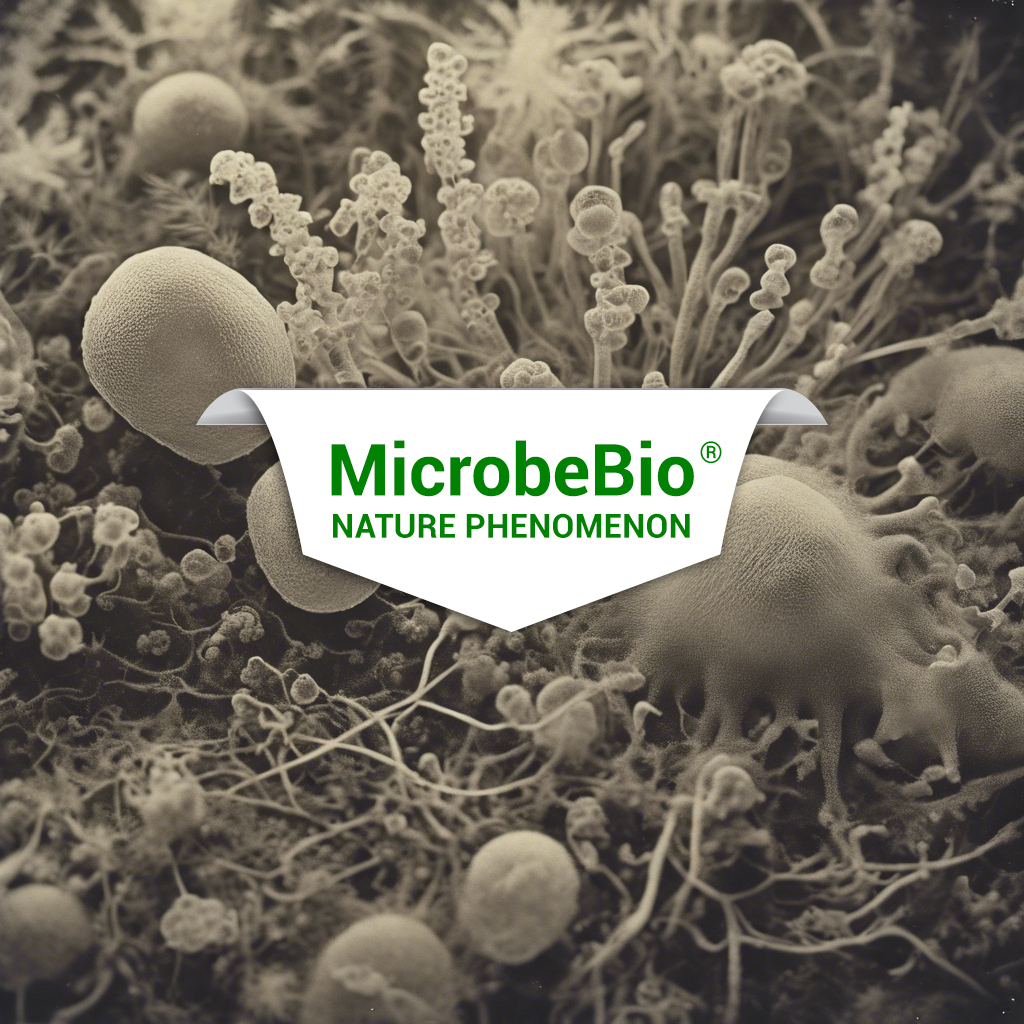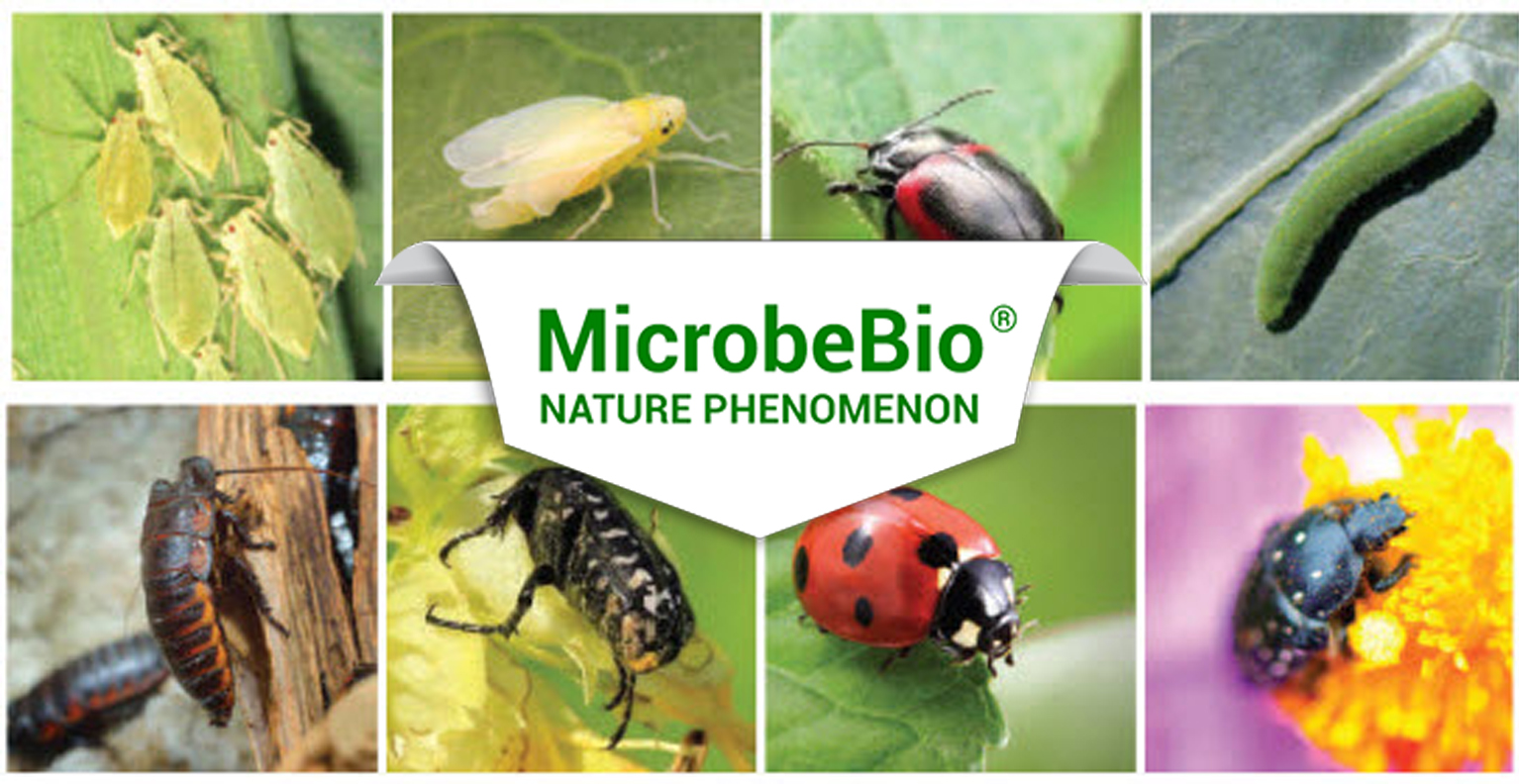The Role of MicrobeBio’s 100% Organic Biorational and Microbial Solutions in Pest and Disease Control for Rice Fields in Southeast Asia
Rice is a staple crop across Southeast Asia, yet rice farmers face significant challenges from a wide array of pests and diseases that threaten yield, quality, and economic stability. Conventional chemical pesticides, though effective, pose risks to the environment, human health, and the sustainability of agricultural practices. MicrobeBio’s 100% organic biorational and microbial solutions offer a scientifically advanced, eco-friendly alternative, enhancing Integrated Pest Management (IPM) strategies and improving rice crop health.
 1. Pests Affecting Rice Fields and MicrobeBio’s Control Solutions
1. Pests Affecting Rice Fields and MicrobeBio’s Control Solutions
- Brown Planthopper (BPH) (*Nilaparvata lugens*): One of the most destructive pests, BPH feeds on rice sap, causing hopper burn and stunting plant growth. MicrobeBio’s microbial biofertilizers enhance plant resistance by promoting a healthy rhizosphere, fostering stronger root systems, and improving the plant’s defense against sap-sucking insects. Microbes in the solution outcompete harmful organisms, reducing BPH populations while enhancing plant vigor.
- Stem Borers (e.g., *Scirpophaga incertulas* and *Chilo suppressalis*): These larvae penetrate rice stems, leading to tissue destruction and severe yield loss. MicrobeBio’s biocontrol agents provide targeted pest suppression by employing microbial strains that enhance the plant’s ability to resist infestation and activate natural defense mechanisms, all while maintaining soil health. This approach drastically reduces the need for synthetic pesticides.
- Rice Leaf Folder (*Cnaphalocrocis medinalis*): The larvae of this pest fold rice leaves, inhibiting photosynthesis and growth. MicrobeBio’s microbial solutions improve photosynthetic efficiency and mitigate pest-induced damage by restoring the plant’s physiological health. The biological agents within the solution offer protection by creating a microbial shield around the plant, deterring larvae from causing harm.
- Rice Weevils (*Sitophilus oryzae*): Known to infest stored grains, rice weevils can lead to significant post-harvest losses. MicrobeBio’s biorational treatments not only improve the resistance of rice crops in the field but also protect grains during storage by inhibiting weevil infestations through natural microbial activity, reducing post-harvest damage and maintaining grain quality.
- Rice Gall Midge (*Orseolia oryzae*): This pest forms gall-like structures (silver shoots) that prevent panicle formation, severely impacting yield. MicrobeBio’s organic biofertilizers enhance the plant’s immune response, reducing the incidence of gall midge attacks and promoting healthy panicle development for higher yields.
- Green Leafhopper (*Nephotettix virescens*): A vector for Tungro virus, leafhoppers pose a serious threat to rice crops. By enhancing plant health and supporting beneficial microorganisms in the soil, MicrobeBio’s solutions reduce leafhopper populations and minimize the risk of virus transmission.
- Rice Water Weevil (*Lissorhoptrus oryzophilus*): This pest targets rice plant roots, reducing overall plant vigor. MicrobeBio’s microbial biofertilizers promote robust root systems that are more resistant to weevil attacks, enhancing nutrient uptake and water efficiency.
- Armyworm (*Mythimna separata*): Outbreaks of armyworms can cause extensive foliar damage, impacting crop growth and productivity. The microbial components in MicrobeBio’s biopesticides act as natural deterrents, reducing armyworm populations while promoting plant recovery through improved nutrient assimilation and photosynthesis.
2. Diseases Affecting Rice Fields and MicrobeBio’s Preventive and Curative Actions
- Rice Blast (*Magnaporthe oryzae*): As one of the most devastating fungal diseases, rice blast attacks leaves, stems, and panicles, leading to reduced yields. MicrobeBio’s biofertilizers are designed to improve plant immunity by promoting beneficial microbial colonization, reducing the incidence of rice blast, and helping plants recover quickly from fungal infections.
- Bacterial Leaf Blight (BLB) (*Xanthomonas oryzae pv. oryzae*): BLB causes wilting and yellowing of rice leaves, leading to significant yield loss. MicrobeBio’s microbial biofertilizers and biopesticides naturally suppress BLB through competitive exclusion, where beneficial bacteria dominate the plant’s microbiome, preventing the pathogen from thriving.
- Rice Tungro Disease: This viral disease, transmitted by leafhoppers, results in stunted growth and poor panicle development. MicrobeBio’s microbial solutions improve plant health, reduce leafhopper populations, and lower the risk of viral spread, ensuring healthier, more resilient rice plants.
- Sheath Blight (*Rhizoctonia solani*): A fungal disease that impacts the lower leaves and stems, sheath blight can reduce photosynthesis and affect plant growth. MicrobeBio’s fungal-resistant microbial solutions enhance the plant’s natural defenses, reducing disease severity and improving photosynthetic efficiency.

- Bacterial Leaf Streak (BLS) (*Xanthomonas oryzae pv. oryzicola*): Similar to BLB, BLS causes streaking on leaves, reducing photosynthesis. MicrobeBio’s organic solutions control this bacterial disease by fostering beneficial microbial populations that outcompete harmful bacteria.
- False Smut (*Ustilaginoidea virens*): False smut impacts panicle quality, forming spore balls and reducing grain quality. MicrobeBio’s microbial biofertilizers reduce fungal spore formation, ensuring that rice grains maintain their quality and marketability.
- Grain Discoloration: A complex of fungal pathogens such as *Curvularia* and *Fusarium* causes discolored grains. MicrobeBio’s biopesticides prevent fungal infections by enhancing the plant’s natural defense system, ensuring higher-quality grains.
- Stem Rot (*Magnaporthe salvinii*): Stem rot weakens plant stems and affects grain filling. MicrobeBio’s microbial biofertilizers strengthen the plant’s stem integrity, reduce disease incidence, and ensure proper grain development.
- Rice Yellow Mottle Virus (RYMV): This viral disease leads to yellowing and mottling of leaves. MicrobeBio’s biocontrol agents support plant resilience, reduce viral transmission by pests, and enhance overall plant health.
3. MicrobeBio’s Role in Integrated Pest and Disease Management (IPM)
MicrobeBio’s 100% organic biorational and microbial solutions play a pivotal role in Integrated Pest Management (IPM) for rice fields in Southeast Asia. By combining biological control agents, resistant rice varieties, and advanced microbial treatments, MicrobeBio provides farmers with a sustainable, eco-friendly approach to pest and disease control. These solutions improve water management, enhance nutrient uptake, and boost plant health, making rice crops more resistant to both biotic and abiotic stresses.
The adoption of MicrobeBio’s microbial biofertilizers and biopesticides helps farmers manage pests like the Brown Planthopper, stem borers, and rice leaf folders, while also preventing diseases such as rice blast and bacterial leaf blight. By fostering a healthy soil microbiome and improving plant immunity, these solutions contribute to a more sustainable, productive rice farming system.
#SustainableRiceFarming #MicrobialSolutions #OrganicPestControl #HealthyRiceFields #MicrobeBio #EcoFriendlyFarming #IntegratedPestManagement #RiceDiseaseControl #BiorationalSolutions #RiceFarmingInnovations

